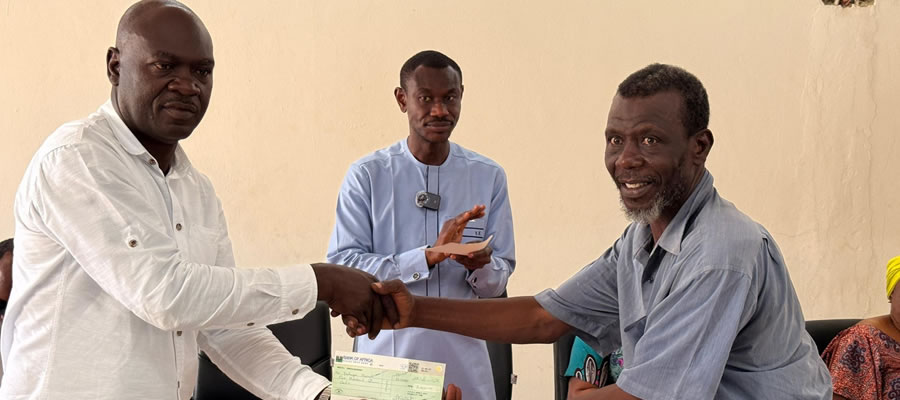

Governance and Decentralization
Governance in the jurisdiction of the assembly is entrusted with the Municipal Assembly whereas the custody of the land is held by the traditional authorities.
Traditional Authority
The original inhabitants of Asokore Mampong, led by their Leader Nana Oti Akomaa, his brothers, Nana Anane Agyei and Nana Gyapong Kodie and their sister Adwoa Dakwaa, arrived at the present day Kumasi from Mensase near Kokofu during the time of Nana Oti Akenten (1640-1660).They first settled at a place called Adumasa, near Adanyase. They built their abode at a location under three oak trees and therefore became known as ‘Adum Miensaasefuo’ or ‘Adumasafuo’ (meaning ‘the people living under the three oak trees’).
During the time of Opemsuo Osei Tutu 1(1680-1717), the people were compelled to move to present day Asokore Mampong when a trading route passing through the area to Salaga was constructed. Quite a number of families moved in to settle with the Adumasa Ekuona people. There are presently 14 groups of families in Asokore Mampong. Almost all these families’ have representatives who sit as councilors at the chief’s palace. After the second Dormaa war, OkomfoAnokye ordered that a place of worship be built in Asokore Mampong, which was called Osei Tutu Nyamekesie. Since then, the NyameKesie shrine has been the last port of call for all Asante kings during the celebration of Odwira festival.
Administration and Management of the Municipal
The Legislative Instrument (LI 2112) of 2012 established the Asokore Mampong Municipal to manage the Assembly. This legal framework empowers the Assembly to become a planning Authority in formulation of policies, programmes, projects, as well as mobilization of resources, within the jurisdiction of the Assembly to undertake development projects. In ensuring effective and efficient operation in the Assembly, communication structure is developed for the Assembly as illustrated below.
Composition of the Assembly
The Assembly, the highest decision making body, has a membership of seventeen (17) comprising the Municipal Chief Executive nominated by the president and must be confirmed by not less than two-thirds of the General Assembly. Two-thirds (10) of the members are elected and one-third (5) appointed by the president. The Member of Parliament (1) whose constituency falls within the Municipality is a non-voting member of the Assembly. The general Assembly is by law to meet at least three times a year.
1) Sub–Municipal Structures
These are subordinate bodies of the Municipal Assembly. They perform functions delegated to them by the Assembly. The Sub – Municipal Structures in the Asokore Mampong municipal are the Zonal Councils and the Unit Committees.
2) Zonal Council
The Sub Municipal Zonal Councils constitute the second level of Asokore Mampong Municipal Assembly’s political and administrative structure. Asokore Mampong Municipal is sub divided into three zonal councils. These are Asawase, Adukrom and Aboabo zonal council.
Each Zonal council is made up of 20 members including a chairman and a secretary. Each zonal council is supported by established administrative machinery, which is headed by the administrator who serves as the secretary. The main functions of the Zonal councils are; administrative, revenue collection and enforcement of sanitation policies and bye-laws. .
According to Local Government Act 462, Zonal Council does not have the power to levy rates, taxes, fees and licenses. The Zonal councils are by law to retain 50 per cent of revenue collected on behalf of the Assembly in their area.
3) Unit Committees
One of the instructions of the Municipal’s administration that is supposed to be very relevant to the development of the Municipality and where the under-represented/poor could be adequately involved are the Unit Committee which are the lowest level of political institutions in the Assembly. The Asokore Mampong Municipal Assembly is divided into 10 Unit Committees. The Unit Committees are supposed to enhance effective and efficient participation. They are expected to mobilize the community for development and also ensure that the development concerns and aspirations of the local communities are adequately addressed by the Municipal Assembly. The Unit Committees and the Zonal councils are however, not planning authorities.
4) Public Sector Agencies
These are the Ministries’, Departments and Agencies (MDAs) through which government policies and programs are implemented. At the Municipal level, the ones that are of direct importance to the citizens are the providers of public utilities including water, electricity, sanitation and telecommunications among others. Many of these utility providers have been privatized in order to ensure that they operate efficiently and deliver services required by urban residents. The relationship between Asokore Mampong Municipal Assembly and the utility organizations is essentially collaborative.
Date Created : 11/23/2017 4:29:54 AM












 facebook
facebook
 twitter
twitter
 Youtube
Youtube
 +233 593 831 280
+233 593 831 280 0800 430 430
0800 430 430 GPS: GE-231-4383
GPS: GE-231-4383 info@ghanadistricts.com
info@ghanadistricts.com Box GP1044, Accra, Ghana
Box GP1044, Accra, Ghana